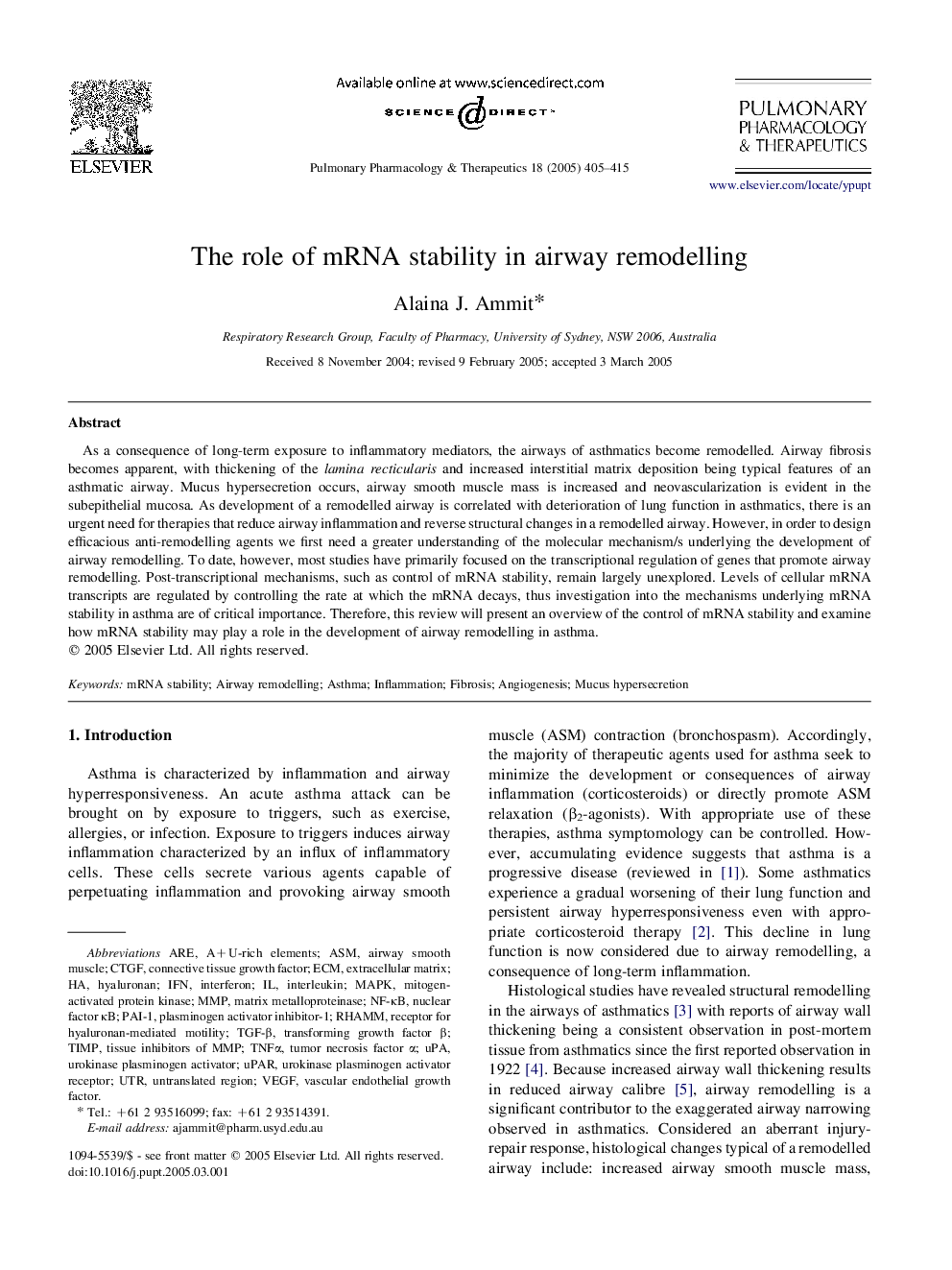| Article ID | Journal | Published Year | Pages | File Type |
|---|---|---|---|---|
| 9017424 | Pulmonary Pharmacology & Therapeutics | 2005 | 11 Pages |
Abstract
As a consequence of long-term exposure to inflammatory mediators, the airways of asthmatics become remodelled. Airway fibrosis becomes apparent, with thickening of the lamina recticularis and increased interstitial matrix deposition being typical features of an asthmatic airway. Mucus hypersecretion occurs, airway smooth muscle mass is increased and neovascularization is evident in the subepithelial mucosa. As development of a remodelled airway is correlated with deterioration of lung function in asthmatics, there is an urgent need for therapies that reduce airway inflammation and reverse structural changes in a remodelled airway. However, in order to design efficacious anti-remodelling agents we first need a greater understanding of the molecular mechanism/s underlying the development of airway remodelling. To date, however, most studies have primarily focused on the transcriptional regulation of genes that promote airway remodelling. Post-transcriptional mechanisms, such as control of mRNA stability, remain largely unexplored. Levels of cellular mRNA transcripts are regulated by controlling the rate at which the mRNA decays, thus investigation into the mechanisms underlying mRNA stability in asthma are of critical importance. Therefore, this review will present an overview of the control of mRNA stability and examine how mRNA stability may play a role in the development of airway remodelling in asthma.
Keywords
ECMUTRNF-κBMMPTGF-βTNFαreceptor for hyaluronan-mediated motilityuPARuPAPAI-1ASMCTGFMAPKAsthmaAngiogenesisinflammationinterferonIFNinterleukinAirway remodellingMucus hypersecretionTransforming growth factor βtumor necrosis factor αmRNA stabilityRhammTIMPAirway smooth muscleVascular endothelial growth factorVascular Endothelial Growth Factor (VEGF)Connective tissue growth factornuclear factor κBurokinase plasminogen activatorFibrosisExtracellular matrixmatrix metalloproteinaseuntranslated regionPlasminogen activator inhibitor-1AREHyaluronanmitogen-activated protein kinaseUrokinase plasminogen activator receptor
Related Topics
Health Sciences
Medicine and Dentistry
Pulmonary and Respiratory Medicine
Authors
Alaina J. Ammit,
